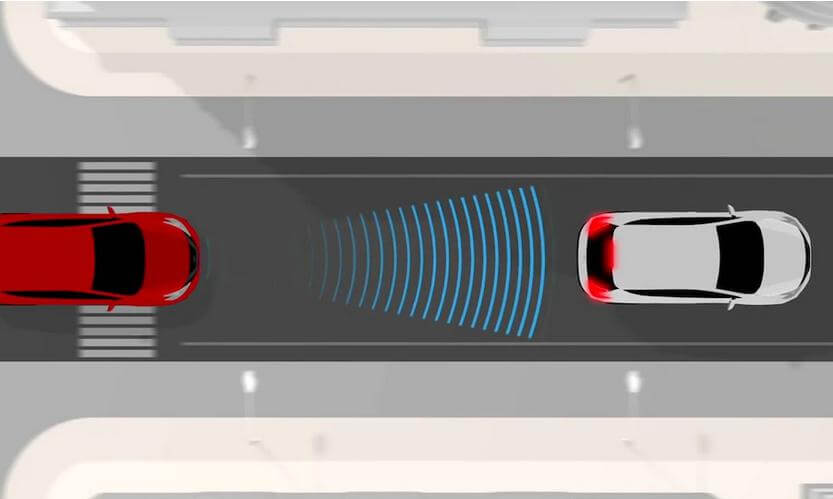Automatic Emergency Braking — Autonomous Emergency Braking
Automatic Emergency Braking — Autonomous Emergency Braking
Automatic Emergency Braking detects potential collisions with a vehicle ahead, provides forward collision warning and automatically brakes to avoid a collision or lessen the severity of impact. Some systems also detect pedestrians or other objects.

How Automatic Emergency Braking works
Some AEB systems use radar sensors mounted within the front grille, bumper, or air vents. Others rely on cameras, which are usually installed inside the windshield behind the rearview mirror area. Some use both.
Whatever the detection method, the system’s software accumulates the sensor data and constantly calculates the crash potential based on that data. If specific parameters are met, the software triggers a Forward Collision Warning to alert the driver and activates the AEB.
Automatic Emergency Braking requires some driver maintenance
AEB technology only works when the camera, radar, or sensors can identify objects ahead. If the exterior sensors are blinded by sunlight or heavy rain, caked-on snow, or dirt on the lens, the system can’t work properly. If you’re driving in snowy conditions, you should remove snow buildup from the sensors/camera and clean the lenses.
Automatic Emergency Braking can produce false braking
Sometimes, the AEB and FCW may misinterpret road obstacles or even steam emanating from a manhole as a perceived threat and activate AEB. In those cases, the braking is usually momentary. However, when this happens it can definitely rattle your nerves.
©, 2021 Rick Muscoplat
Posted on by Rick Muscoplat